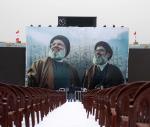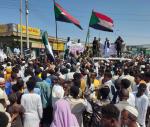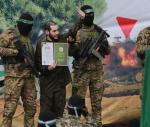You are here
A way out for Ukraine and Russia
Jan 14,2015 - Last updated at Jan 14,2015
The leaders of Russia and Ukraine will meet in Astana, Kazakstan, on January 15 to discuss, once again, an end to the fighting that has roiled eastern Ukraine’s Donbas region since last spring.
Hopes for a viable agreement are not high.
One reason the crisis in Ukraine has proved so difficult to overcome is that its roots stretch far outside the country’s borders.
Finding a genuine solution will require the resolution of a dispute between Russia and the West that dates back to the 1990s, before Russian President Vladimir Putin came to power.
At its heart, the conflict in Ukraine is about a disagreement over NATO’s expansion into what Russia regards as its “near abroad”.
Fortunately, a solution is possible — but it will require a reworking of Europe’s security architecture.
Both sides are deeply committed to their positions.
In November, Putin’s spokesperson, Dmitry Peskov, told the BBC that Russia required a “100 per cent guarantee that Ukraine will not join NATO”.
That is a promise that Western countries will be unable to provide. For them, what is at stake is the principle that sovereign countries have the right to chart their own course, rather than be entangled in a larger power’s sphere of influence.
Indeed, it was this principle that, once invoked to justify NATO enlargement in the 1990s, put the two sides on a collision course.
With Russia’s neighbours free to join the alliance, the natural result could only be a new dividing line, one pressing up against the Russian Federation’s western and southern borders.
This outcome was foreseen by the veteran American diplomat George F. Kennan. In an interview he gave to The New York Times in May 1998, he predicted that NATO enlargement would lead to a new Cold War.
Now that Kennan’s prediction has all but come to pass, the parties to the conflict would be wise to take a lesson from the diplomatic efforts that helped bring the original Cold War to an end — in particular, the 1990 Treaty on Conventional Armed Forces in Europe (CFE).
NATO enlargement may have rendered the treaty’s detailed provisions obsolete, but its underlying approach — a transparent inspections regime that enforces limitations on the overall quantity and, crucially, the regional concentrations of ground forces — remains applicable today.
For the West, a revamped CFE Treaty would help mitigate worries about military threats in the area that Russia has traditionally considered its sphere of influence. Violations of the treaty would be easily detectable and allow time for the West to deploy countermeasures.
In addition, there would be no formal prohibition of NATO membership for Ukraine — or for any other country in the Russian periphery.
For Russia, a new treaty would allow it to live with the hitherto nightmare scenario of Ukrainian accession to NATO; as long as the pact remained in force, Ukraine’s membership would have no military consequences. NATO, at least in the Russian hinterland, would become first and foremost a political organisation.
Above all, a new treaty would allow both Russia and the West to secure their interests in a balanced and binding agreement.
For Russia, this would mean a significant improvement on what it has been offered since the end of the Cold War. Though invitations by the West to join organisations such as the NATO-Russia Council or the G-8 may have been symbolically important and thus politically valuable, these venues provide only forums for discussion; they do not produce binding agreements.
A new treaty would do more than anything else to bring peace to Ukraine. It would eliminate the primary motive behind Russia’s support for separatism in the country’s southeast, ensuring that Ukraine remains ineligible for NATO membership.
The dispute over the fate of Crimea would continue, but an agreement between Ukraine and Russia on the issue could be made a precondition of the treaty’s entry into full effect.
There are two other obvious objections to this proposal. The first is that Putin would reject a treaty with NATO. That should not stop the West from making the offer.
With the Russian economy in serious trouble, Putin may be looking for a way out of his corner.
The second objection is that the West would be best served by simply standing back and watching while sanctions and plunging oil prices bring down Russia’s economy — and ultimately Putin himself.
But this would be an irresponsibly dangerous and ultimately counterproductive strategy. After all, economic and political breakdown in Russia would have profound adverse consequences well beyond Russia’s borders — particularly for Ukraine.
The writer, a former British diplomat in Moscow, is managing director of Trustedsources, an independent research service on emerging markets. ©Project Syndicate, 2015. www.project-syndicate.org












